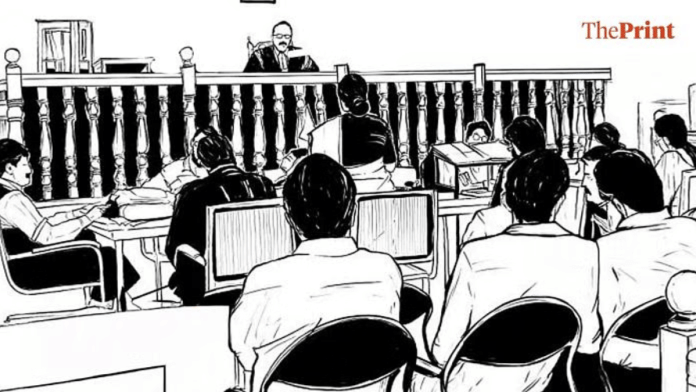Thank you dear subscribers, we are overwhelmed with your response.
Your Turn is a unique section from ThePrint featuring points of view from its subscribers. If you are a subscriber, have a point of view, please send it to us. If not, do subscribe here: https://theprint.in/subscribe/
In India, no incident no matter how small is allowed to die a natural death; it must be reborn a thousand times in the womb of our biases. It becomes everything else that people want it to be, except for what it actually is. An incident becomes a statement on caste, religion, political ideology, and imagined victimhood: everything but the act itself. We have mastered the art of whataboutery: a national instinct to deflect, relativize, and weaponize every event to fit our narratives.
Recently, when an object (shoe, as per multiple sources) was hurled at Hon’ble Chief Justice of India, the country split into interpretive camps. Some saw an attack on the first Buddhist Chief Justice, others on a Dalit who had “dared” to rise to the highest judicial office. Some called it a symptom of Hindu majoritarianism; others framed it in a hypothetical. Some even celebrated the shameful act but only a few paused to see the core problem: that an institution representing justice and constitutional authority had been disrespected, and that such acts corrode the already fragile public faith in the judiciary.
Outrage comes with an asterisk(*). Every discussion begins with an event and ends with a counterexample, often irrelevant but emotionally satisfying. It’s not just deflection, but a deeper symptom of our moral laziness. We lack the ability to confront any issue directly, so instead we draw the issue in “what about X?. Why didn’t you say something when Z happened?”
On October 6, 2025, an advocate attempted to hurl a shoe at Chief Justice of India B. R. Gavai. The CJI, unfazed by the commotion, maintained his composure and immediately stated, “Don’t get distracted by all this… These things do not affect me.” Hopefully people of his nation had the same civility or composure. It was a moment that should have provoked a conversation on civility and restraint in dissent. Instead, it became raw material for our endless appetite for interpretation. Within hours, the act ceased to be about respect for the judiciary and became a canvas for every ideological imagination.
The first narrative was caste-based. Many framed it as an attack on India’s Dalit Chief Justice, proof that even at the highest office a Dalit isn’t safe. While caste injustice is real, this projection lacked grounding. The identity of the victim overshadowed the dignity of the institution. Then came religious and political readings. The assailant’s cry, “Sanatan ka apmaan nahi sahega Hindustan,” was branded either Hindutva extremism or righteous anger, turning a question of civility into an ideological battle. Soon followed the refrain: “What if the shoe-thrower were a Muslim?” This hypothetical echoed across platforms, revealed our obsession with comparative victimhood. It was classic whataboutery: escaping the real by inventing the imaginary. Lastly came the memes, and sarcastic takes. Specially those who took joy out of this shameful incident. Our national tendency to turn outrage into entertainment has drowned out introspection.
Amid all these projections, the core truth disappeared: the Chief Justice of India, a constitutional authority, was subjected to public disrespect. Between caste readings, religious conjectures, and imagined hypotheticals, we forgot this wasn’t about a Dalit, a Hindu, or a Buddhist, it was about the office itself and our collective respect for the institution it represents. “A democracy stands not just on laws but on the reverence citizens hold for institutions that uphold them.” Yet incidents like this reveal how far we’ve drifted. When disagreement loses dignity, protest becomes desecration. Civil criticism is vital, but contempt corrodes. We now see judges through partisan eyes, faith replaced by suspicion. What once inspired quiet respect now invites ridicule, the slow decay of our civic discipline.
India’s public discourse today thrives not on reflection, but on deflection. Every debate quickly dissolves into a counter-debate, every wrong is justified by a worse one, and every issue is met with the timeless refrain: “But what about…?” This addiction to comparative outrage has hollowed our moral core. Whataboutery thrives because it comforts us. It spares us the discomfort of self-reflection. It lets us shift the blame, inflate the irrelevant, and postpone accountability. And so, we argue endlessly, not to understand, but to score points in a moral marketplace that values noise over nuance. But democracies do not survive on noise. They survive on discipline: of thought, of speech, and of respect. The day we stop weaponizing every incident to fit our ideological lenses, and begin to see it for what it truly is, that day our public conscience might start healing. Because our genius for whataboutery has outgrown our capacity for reason.
These pieces are being published as they have been received – they have not been edited/fact-checked by ThePrint.


